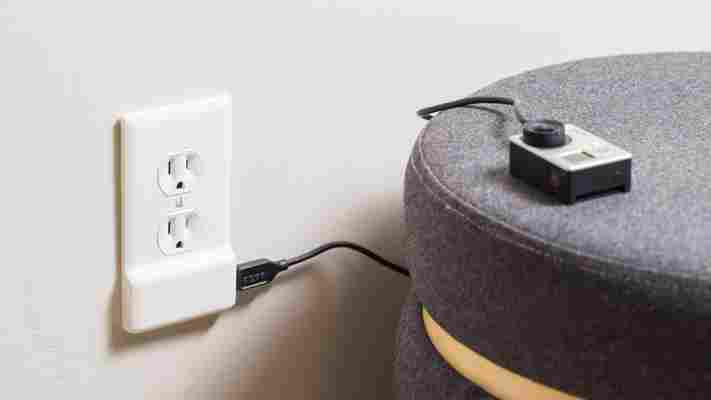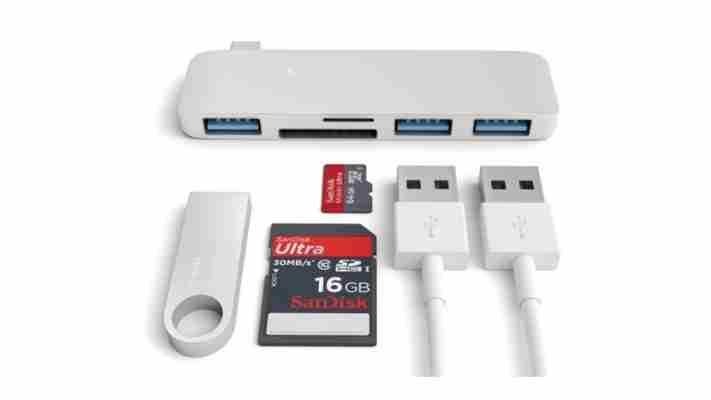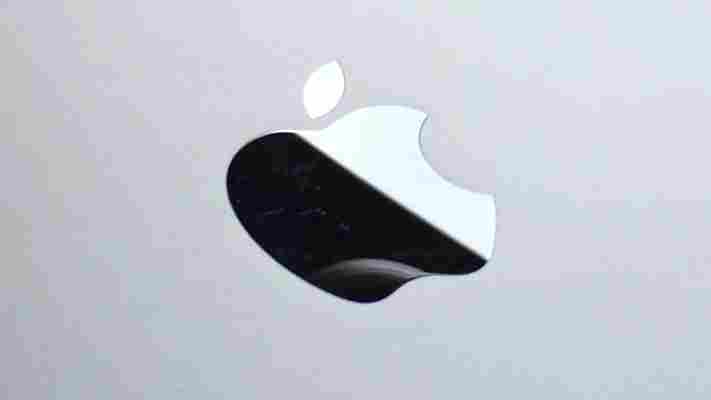At some point, you’ll need to plug your phone in. Even if you charge wirelessly, that charger plugs into an outlet. SnapPower Charger is hoping you’ll keep the cord, but drop the wall charger.

SnapPower is a replacement for your existing outlet cover, but cleverly (and covertly) snipes power from your home.
With two prongs that pinch onto the screws holding your actual outlets in place, SnapPower routes a bit of juice to a USB outlet that sits just below your main plugs.
It’s still plastic, like your existing outlet cover, but the integrated charger keeps both outlets free. It’s like having a third outlet dedicated to charging your mobile devices.
It also comes in a few different colors and styles, meant to fit any home.
Because it has a running electrical current, you need to cut power to the outlet before installing SnapPower. It’s likely as simple as toggling a breaker, but do make sure you cut the power first. Don’t electrocute yourself.
Once you’ve got the power off, take the existing plate off and slide the SnapPower prongs over the screws holding your outlets in place. There’s a very handy installation guide, and SnapPower can be mounted with the USB port on the top or bottom.
After you’re done installing SnapPower, turn your power back on.
SnapPower is passive, and that’s why it’s good. It won’t jump out at you or make itself known, but it’s there waiting for you when you need to plug a device in.
As far as charging your device, it does so in about the same time your wall charger does. I found it to be right in line as the included Apple charger when powering up an iPhone 6.
Because it’s passive, SnapPower also doesn’t take advantage of things like Qualcomm’s QuickCharge. You won’t get any bells and whistles, but you do get your outlets back.
The ‘charger’ SnapPower houses is probably the same as the one you’re plugging in, though. The input is 120V, while the output is 5V.
It’s $20. That’s a bit steep for an outlet cover, and I can’t say outfitting an entire home would be cost effective for many. SnapPower does have bulk order pricing, if you really wanted to.
That’s not really the goal, though. Considering that we’re creatures of habit who tend to charge devices in one place while at home, SnapPower makes a lot of sense. If you charged in the kitchen, it would be nice to have the outlets open for kitchen gadgets.
The same could be said for the bedroom, or a hallway table. If you’re going to charge there habitually, it may be a good idea to grab a SnapPower.
If you’ve got three devices you use daily — say a tablet, smartphone and smartwatch — SnapPower suddenly becomes quite attractive, especially if you’re one to charge nightly. I’ve been doing just that, and having all my stuff centrally located while charging is a pleasure.
SnapPower Chargers are currently available via the SnapPower website.
This is the MacBook USB-C hub Apple should have thought of
The new MacBook is pretty great, but lacks all the ports you’re likely used to if you have a MacBook Pro or Air. That’s what makes Satechi’s new USB-C hub so wonderful.

Plugging into your USB-C port on the MacBook, Satechi’s hub offers three USB 3.0 ports, an SD card reader and a Micro SD card reader. It’ll keep you from daisy-chaining dongles together just to get work done.
What it lacks is a USB-C passthrough. If you’re out of power, you’re out of luck — this one will have to come out until you power your MacBook back up. There’s also no Thunderbolt port for hooking your MacBook up to an external monitor or ethernet port if you need a wired internet connection.
It’s still a good idea, and probably the hub Apple should have thought of when they introduced the MacBook. For $29.99, it’s also not too expensive, and you can color match them to your MacBook.
If you want to pick one up, the hub is available via the Satechi Website or on Amazon .
➤ Satechi® Type-C USB 3.0 3 in 1 Combo Hub [Satechi via Mac Rumors ]
Leaked schematics suggest you may not want a case for the iPhone 7 Plus
A leaked schematic of the next iPhone has purportedly found its way to a Japanese magazine, suggesting all the rumors are true.

The device , which is believed to be the larger ‘plus’ variant of the iPhone 7, has space for two cameras as well as no headphone jack . Curiously, Apple’s Smart Connector found on the iPad Pros is also present around back.
Antenna lines have been removed from the back, but it’s not clear if they’ll be gone for good or if the schematics just don’t show where Apple is hiding them.
Aesthetically, this isn’t a major redesign; it’s even the same dimensions as the iPhone 6s Plus. The camera bump is a bit longer, though.
But what’s worse: the Smart Connector or antenna lines? You could cover antenna lines with a case, but depending on how you want to use the Smart Connector, a case may not be appropriate.
Similarly, it may cause iPhone 7 Plus (we’re just going with the Plus; some are calling a ‘Plus Pro’ or something equally strange, so who knows) cases to be really confusing. A bottom bit that slides off so you can connect your phone to a wireless charger may be in order, and that’s silly.
Cases may also end up laving the bottom exposed, by and large. Imagine a case that has a chin-strap to keep it on your phone, but doesn’t cover the smart Connector up. That would just be — well, stupid.
Again, this is all based on schematics, which could be early drawings or outright fake. Still, I’m not excited by a Smart Connector on an iPhone 7 Plus. I don’t care to charge wirelessly (because even docks have to be wired, so it’s not that big of a deal), and I can’t even fathom trying to use a keyboard with an iPhone to do work.
But dual cameras? Sign me up; that might be really cool.
